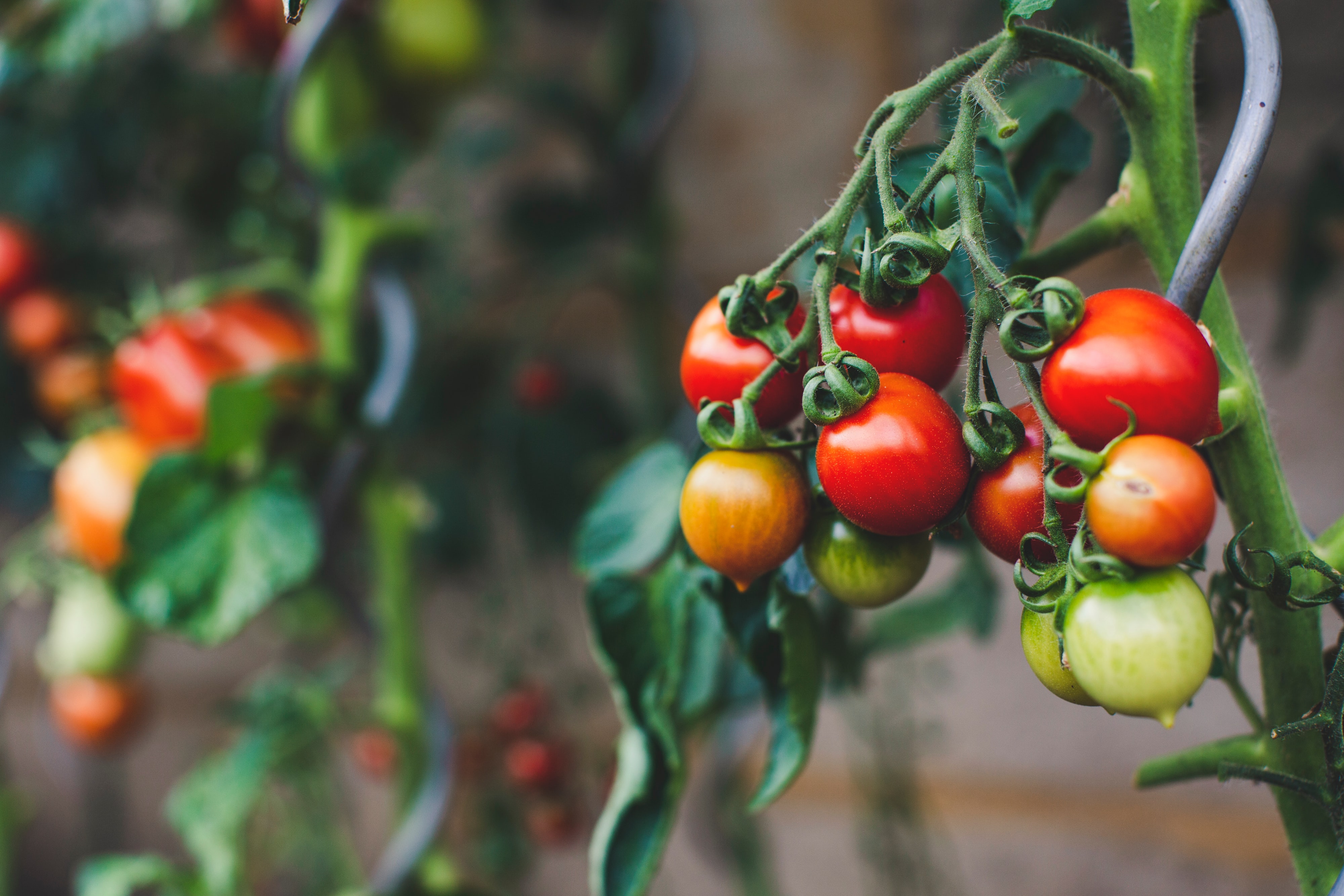We first began experimenting with tomatoes about four years ago. We started a few plants from seed in small pots next to our living room window. In hindsight, we may have gone a little overboard as novices. We had some standard varieties of course, like Roma tomatoes, cherry tomatoes, and grape tomatoes, but we were most excited about some heirloom varieties that we had received from a friend. When the plants got big enough, we planted them in the ground in a sunny little spot in our backyard.
As our plants started to produce fruit, our excitement grew and we began to dream about the BLT sandwiches that we were going to eat all summer. You can imagine our disappointment when we went outside one morning to pick them and found entire tomatoes missing or partially eaten, and on some of the plants, leaves and stems had been bitten off as well. As you may have guessed, some of this damage was deer.
Deer do eat tomatoes. In fact, they will eat several parts of the plant, including the stems and leaves. Deer actually don’t prefer to eat the tomatoes and are just going after the green leaves and stems, but often a several tomatoes are eaten in the process. If enough of the stems and leaves are eaten or damaged, the plant may die or not produce fruit. This is because the stems and leaves are essential for giving the plant to nutrients necessary to produce fruit. If most of the stem is intact, the plant may be able to rebound.

Will Tomato Cages Prevent Animals From Eating Tomatoes?
In my experience, tomato cages (the wire or mesh funnel shaped structures that allow the tomato plants to “climb”) will prevent smaller critters from eating tomato plants. However, once the plants grow large enough to exceed the height of the cages, the deer can still chomp leaves, stems, and tomatoes and do some damage. I do find the cages helpful, particularly to protect the plants when they are young and small.
What Other Animals in My Yard Could Be Eating My Tomatoes?
I learned from some trial and error and a little research that deer were not the only animals eating my tomato plants. The traditional logic to determine what is eating your plants is as follows.
Holes in the fruit of your tomato plants are likely the work of pecking birds. If the ripe tomato fruit is nibbled with tiny bite marks, it is likely chipmunks or squirrels are eating the plants. When a rabbit or deer munches on the tomato plants, a larger portion of the plant is typically missing. Deer and rabbits not only eat the tomatoes, but also the stems and foliage of the plant. Deer also tend to bite off plants leaving behind a jagged edge (their teeth are not as sharp as rabbits, who can make a cleaner break when they bite).
How Can I Keep the Deer Away From My Tomatoes?
There are many solutions marketed towards fending off deer, many of which we have discussed in previous posts on this blog. Some work better for tomato plants than others.
Our favorite method for keeping the deer away is motion activated water sprinkler systems. These devices are gentle and safe for both your plants and the deer, and the systems can be set on a timer to only spray intruders at night.
There are loads of deer and rabbit repellent products sold at most home and garden stores. These solutions work fairly well, and most are safe for both your plants and the deer. I always read the label of any spray used in my yard, as we have a dog and kids who are in the yard all summer. The drawback is that the spray must be reapplied after each rainfall.
Another safe option to protect your tomato plants is by doubling up on the protection of the tomato cages by installing temporary fencing. These fences can be built from chicken wire or plastic mesh fencing attached to wooden stakes. The drawback here is that it could make accessing the plants to harvest or care for them a bit more difficult.
One interesting idea that I’ve read about but have not yet tried is placing wire on the ground around the tomatoes. The logic is that deer don’t like the feeling of the wire on their feet and will therefore avoid approaching the tomato plants. My tomatoes are planted in a grassy area that I’ve worked very hard to grow and maintain, so I haven’t wanted to lay wire down on the ground for fear that I might kill my grass.
How Can I Protect My Tomatoes from Smaller Pests?
There are several species of bugs, worms, aphids, and other tiny, crawling creatures that can harm tomato plants, and in some ways, these can be harder to combat than deer or rabbits. You can make your own repellent using neem oil. This all natural insect repellent can be applied to the tops and bottoms of leaves using a spray bottle. As with the commercially available products, you’ll have to reapply after each rain shower.
Aphids love tomato plants. You can identify them pretty easily as they are large enough to see with the naked eye (they have a green, orange, or brown soft body). They also leave white spots on the leaves and stems of the tomato plants. You can give your tomato plant a shake to attempt to detach them, and apply a simple concoction to keep them away. Mix one gallon of water, one tablespoon of dish soap, and a teaspoon or two of peppermint oil.
Some gardeners I know swear by a homemade insect repellent made by blending hot peppers (usually cayenne) with water in a blender and applying this to their tomato plants.
As much as I love my home grown tomatoes, handling and blending peppers in the kitchen is an extra step that I have never been willing to take to protect them. But if you are growing hot peppers and find yourself with an abundance of them, it could be worth a try.
If you are growing tomatoes in your garden, read our post here to find out if coffee grounds are good for tomato plants.
